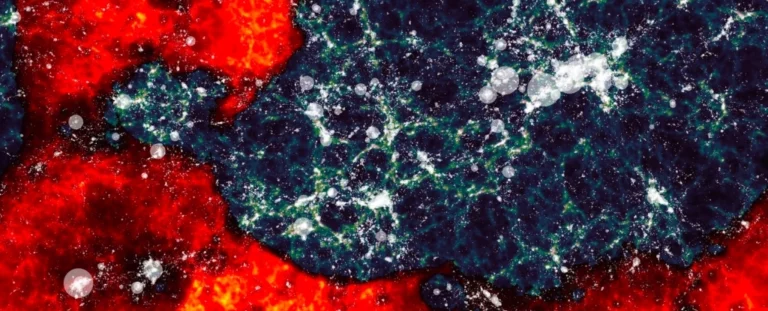It’s Possible That the First Stars Were Heavier Than 100,000 Suns.
The Universe was simply different when it was younger. Recently astronomers have discovered that complex physics in the young cosmos may have led to the development of supermassive stars, each one weighing up to 100,000 times the mass of the Sun.

We currently have no observations of the formation of the first stars in the Universe, which is thought to have taken place when our cosmos was only a few hundred million years old.
To understand this important epoch, astronomers turn to sophisticated computer simulations to test out models of how the first stars formed.
Over the years astronomers have wrestled with the key question of what is the typical size of the first stars. Some early estimates predicted that the first stars could be hundreds of times more massive than the Sun, while later simulation suggested that they would be more normally sized.
Recently a team of researchers have put together a new round of simulations and come to a very surprising conclusion. Their simulations specifically looked at a phenomenon known as cold accretion. To build large stars you have to pull a lot of material into a very small volume very quickly.
And you have to do it without raising the temperature of the material, because warmer material will prevent itself from collapsing. So you need some method of removing heat from material as it collapses very quickly.
Earlier simulations had found the appearance of dense pockets within early galaxies that cool off rapidly from emitting radiation, but did not have the resolution needed to follow their further evolution.
The new research takes it a step further by examining how the cold dense pockets that initially form in the early Universe behave.
These simulations revealed that large flows of cold, dense matter can strike an accretion disk at the center of giant clumps of matter. When that happens, a shockwave forms. That shockwave rapidly destabilizes the gas and triggers the instant collapse of large pockets of matter.
Those large pockets can be tens of thousands times more massive than the Sun, and in some cases even 100,000 times more massive than the Sun. With nothing to stop their collapse, they immediately form gigantic stars, known as supermassive stars.
The astronomers do not yet know if supermassive stars formed in the early Universe. They hope that future observations with the James Webb Space Telescope will reveal clues as to the formation of the first stars and galaxies and determine if these monsters appeared in the infant Universe.
This article was originally published by Universe Today. Read the original article.
Do not forget to share your opinion with us to provide you with the best posts !




I’ve learn a few just right stuff here. Certainly worth bookmarking for revisiting.
I wonder how a lot attempt you put to create the sort of
great informative web site.
Hello, I log on to your blog like every week.
Your story-telling style is witty, keep up the good work!